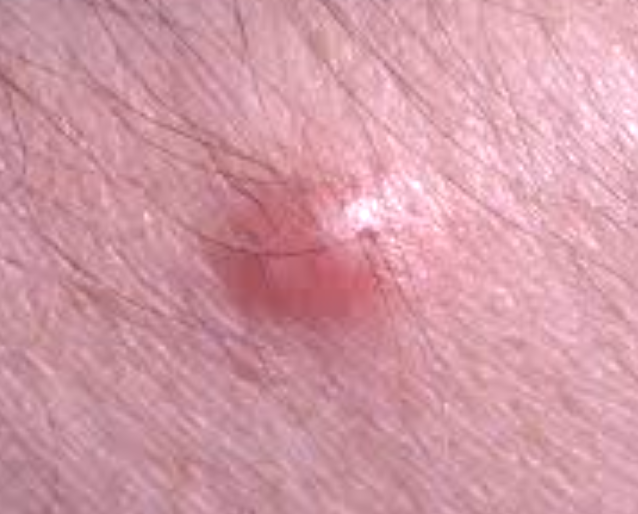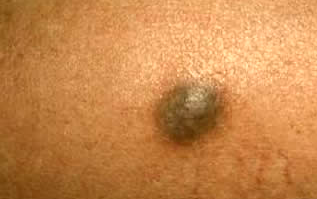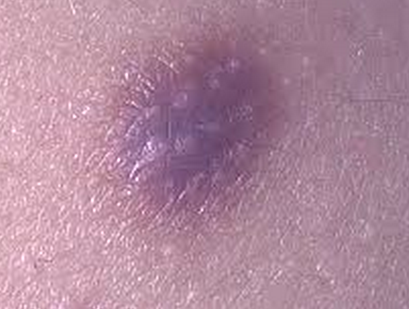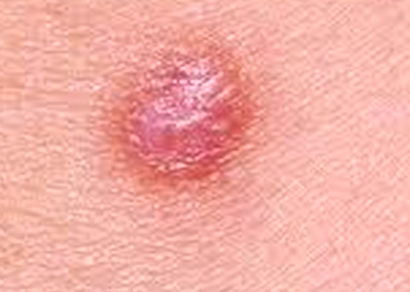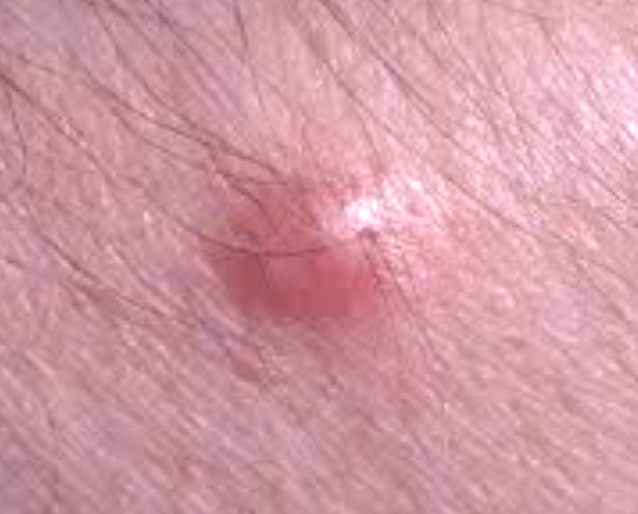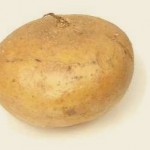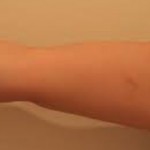Dermatofibroma is a skin disorder that forms abnormal growth on the skin and mostly affects the leg portion. These growths are small and its size varies from ½ an inch to 1 cm in diameter. This skin infection isalso known as ‘sclerosing hemangioma.’ Dermatofibroma is generally made up of fibrous tissues and at times dermatofibroma is also called as ‘fibrous histiocytoma.’This is because of the prevalence of growths of dermal dendritic histiocyte cells. These growths are not cancerous or malignant. Dermatofibroma is a type of urticaria, which is a type of a skin infection.
Dermatofibroma usually occurs as one abnormal tumor; however it may appear in groups as well. These growths are round in shape, solid and appear like thickened bulges on the skin. It may be brown or purple colored and is made up of scar tissues. It affects the deep layers of the skin as well such as the dermis.
Symptoms of Dermatofibroma
Some of the symptoms of a dermatofibroma are as follows:
- The size of dermatofibroma may vary; it may be found in the size of a BB pellet or as large as a kidney pea.
- It usually affects the lower parts of the legs. However it may also develop on the torso or arms.
- In the affected part of the skin, patches are visible which may be of various colors such as pink, brown, purple, red or gray. But with time these colors may change.
- Dermatofibroma may look like an abnormal growth and may also bleed when scratched.
- It usually appears as a single growth but at times may also appear in groups.
- Usually it is not painful but with time it may become tender and result in itchy feeling causing pain.
- Mostly these growths are itchy and sensitive
- Whenever a growth is pinched, it is likely to shift inwards.
Dermatofibroma are not malignant or cancerous, yet patients should consult a skin specialist for assessment. If these growths are black or dark brownish or change color or size, then it is necessary to visit a medical expert. If these growths bleed or are painful then doctor should be consultedright away.
Causes of Dermatofibroma
The cause for a dermatofibroma is not known till date. In the beginning it forms as a hard papule like a button which may be tender and its size may change with time. Some of the risk factors that will increase the chances of beingaffected by dermatofibroma are given below:
- Females are more vulnerable as opposed to the male population
- Sometimes an insect bite can also cause dermatofibroma
- It may be hereditary as well; if family members suffer from dermatofibroma then the risk increases of developing this skin disorder.
- It affects all age groups; still it is not common in kids but generally the older and middle aged men and women are affected.
- Mild or minor injuries may also increase the risk of developing this skin disorder.
Treatment
Treatments are usually not necessary for a dermatofibroma. Still some of them may go for elimination or removal of the abnormal growth. It may be because it occurs at a very odd place that result in uneasiness or discomfort, like the face. If it appears on the face it is bound to be nicked while shaving. Few of these growths may regularly rub against clothes causing irritation. Also dermatofibroma that cause pain and itchiness requires treatment. Therefore in such matters doctor should be consulted.
Some of the treatments of a dermatofibroma are as follows:
- Medical experts do not depend upon the diagnostic test as they do not give accurate results, rather they go for biopsy. In this a bit of the affected tissue is removed for analysis to come to correct conclusions.
- Surgery is one of the possible ways to remove the abnormal growth.But the anomalous growths have deep roots in the skin and if surgery is opted then it will include the deep layers of skin. This will cause scars.
- Cryosurgery is also a good method to treat dermatofibroma. In this liquid nitrogen is used to freeze the topmost area of the abnormal skin and then it is destroyed. Another option is that the top portion of the growth can be surgically scrapped off through various instruments of surgery. These methods do not cause scars. Still they destroy only the top portion of the dermatofibroma whereas the deeper part of the growth is same. Thus there is high risk of redevelopment of dermatofibromas. In such a case the person affected by dermatofibroma will have to visit the doctor again and undergo same surgeries again.
- In exceptional cases, a type of skin cancer in the beginning may look like a dermatofibroma which may later spread to other parts of the body. It is known as ‘dermatofibrosarcoma protuberans’ or DFSP. It is, thus, necessary to consult a doctor if any abnormal skin growth is visible.
Dermatofibroma Pictures
